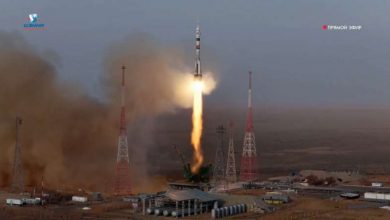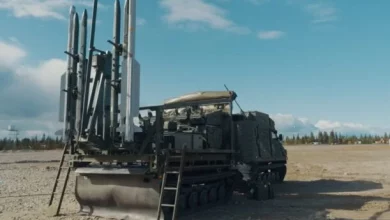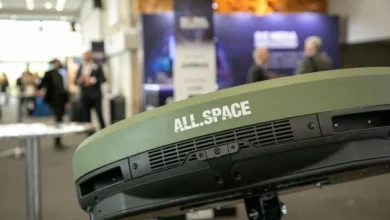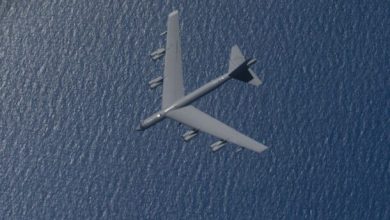Ukrainian F-16s fly 80% of combat sorties
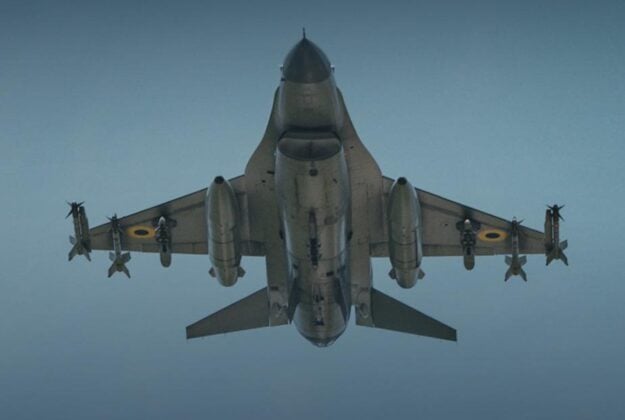
Ukrainian fighter pilots are pushing the limits of Western airpower, adapting U.S.-made F-16s to the realities of a high-intensity war against Russia.
As retired U.S. Air Force Lt. Gen. David A. Deptula wrote in Air and Space Forces Magazine, the fighters now account for nearly 80 percent of Ukraine’s combat sorties, transforming into what he calls a “living laboratory” of modern air combat.
On October 6, the Mitchell Institute for Aerospace Studies hosted one of Ukraine’s leading F-16 pilots, known by his call sign “AB.” As the vice commander of a Ukrainian fighter wing credited with downing more than 1,000 Russian Shahed-type drones and cruise missiles, his visit provided an unfiltered look at how Ukraine’s Air Force is evolving under pressure.
According to Deptula, “Ukraine’s defense against Russia’s air attacks demonstrates an important and monumental shift in fighting capability executed by Airmen like ‘AB.’”
AB, who first flew Soviet-built MiG-29s long before Russia’s 2014 invasion of Crimea, is now part of a small cadre of Ukrainian pilots operating NATO-supplied Block 10 and Block 15 F-16s. Despite limited infrastructure and constant Russian strikes, these aircraft now perform most of Ukraine’s missions, including intercepting cruise missiles and Iranian-designed Shahed/Geran drones that function as precision-guided munitions.
“The F-16s are flown by a comparably small number of pilots, yet they now fly roughly 80 percent of all Ukrainian Air Force sorties,” Deptula wrote, calling the achievement evidence of both the jet’s reliability and the pilots’ skill.
While Ukraine continues to fly its legacy MiG-29 and Su-27 fleets, sustainment remains a growing challenge. “That makes Western sustainment support for its F-16 fleet all the more essential,” Deptula noted.
The F-16’s advantages in radar, situational awareness, and precision strike capability have fundamentally changed Ukraine’s ability to fight. Missions now include both defensive counter-air and surface attack. Without contractor support or established tactics and procedures, “Ukrainian pilots and ground crews have quickly taught themselves to maintain, arm, and employ the aircraft effectively,” the article said.
They have also pioneered new approaches to Agile Combat Employment (ACE), a U.S. Air Force concept designed to ensure operations continue despite heavy attack. “Ukraine’s F-16 force is, in many ways, pioneering a technique the U.S. Air Force calls agile combat employment, executing the concept in real time while under continuous Russian attack,” Deptula wrote.
Operating from dispersed airfields, Ukrainian squadrons move frequently to avoid Russian targeting. “Ukrainian Airmen have demonstrated the practical value of ACE better than any exercise or simulation could,” Deptula added.
Despite ongoing missile barrages, “no Ukrainian air base has been destroyed or put out of action,” the article emphasized, underscoring both the adaptability of the pilots and the resilience of their support crews.
AB also described the growing challenge of Russian electronic warfare. “Jamming, spoofing, and interference must be overcome daily,” he said, stressing that “more effective EW systems and countermeasures” are urgently needed to maintain air dominance. “Victory in the modern air war depends not only on aircraft performance, but also on the ability to dominate the information and electronic domains,” he added.
AB expressed deep gratitude to the United States for its ongoing support, calling it crucial to Ukraine’s continued defense. But he warned that more must be done. When asked what the U.S. could do to most improve their success, AB responded directly: “Block 70 F-16s and more missiles. There are a lot of targets to shoot down.”
Deptula wrote that Ukraine’s experience offers vital lessons for the United States and its allies. “Ukraine’s F-16 experience is more than a story of resilience; it is a living laboratory for air warfare,” he said, adding that Ukrainian pilots are refining tactics and applying ACE principles under real combat conditions.
He cautioned that U.S. policy still prevents American personnel from assisting or observing these operations. “That’s a missed opportunity to draw lessons in real time during one of the most dynamic air campaigns in modern history,” Deptula wrote.
As Russia adapts to Ukraine’s air tactics, other adversaries are watching. “As Russia adapts to Ukrainian tactics, so too will China, North Korea, and Iran,” Deptula warned. “Every day that the U.S. hesitates to provide full and unrestricted support to Ukraine’s airpower efforts is another opportunity for these potential adversaries to learn how to counter Western combat capabilities.”
He concluded with a clear message: “The sooner the United States fully commits to ensuring Ukraine’s success, the stronger our own national defense posture will be.”


